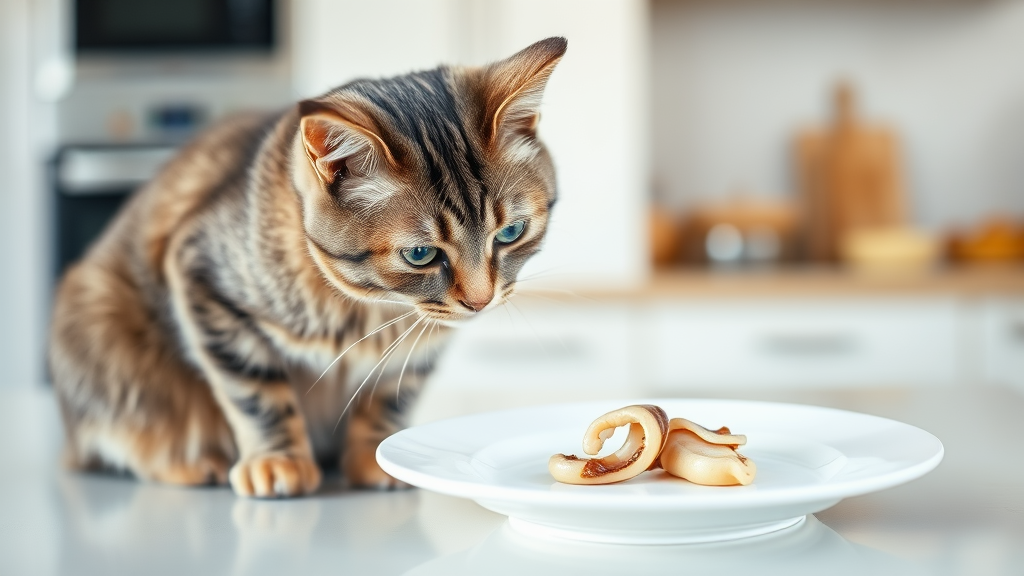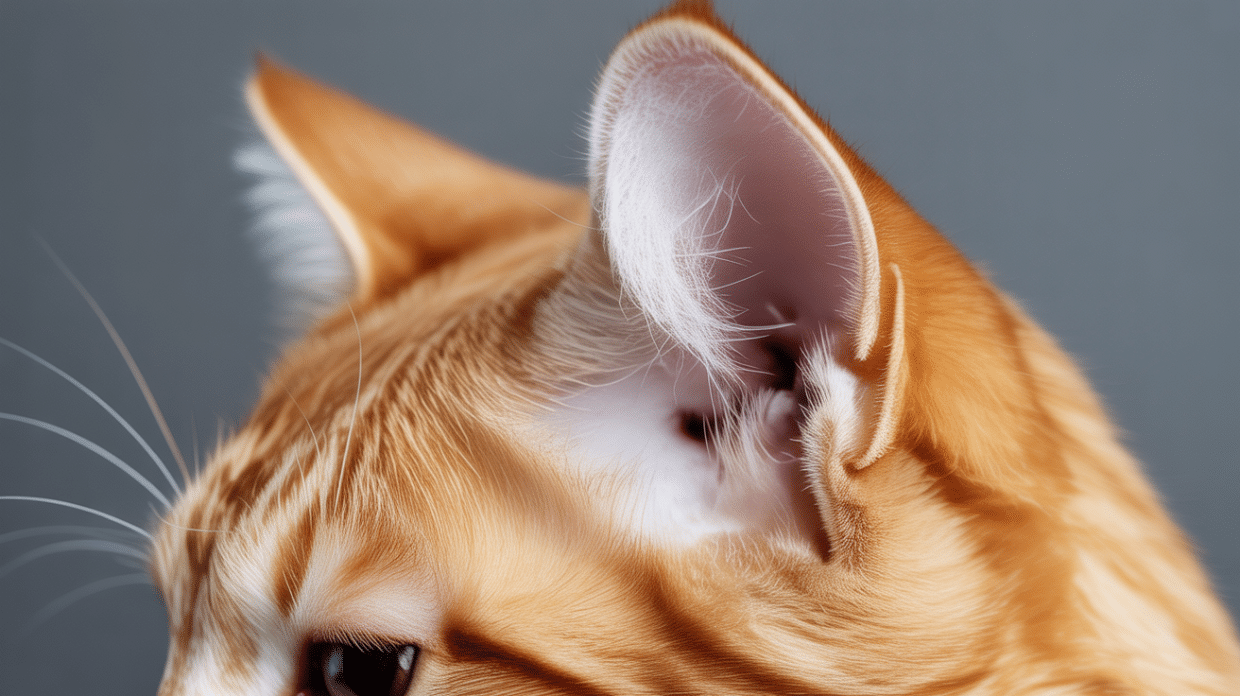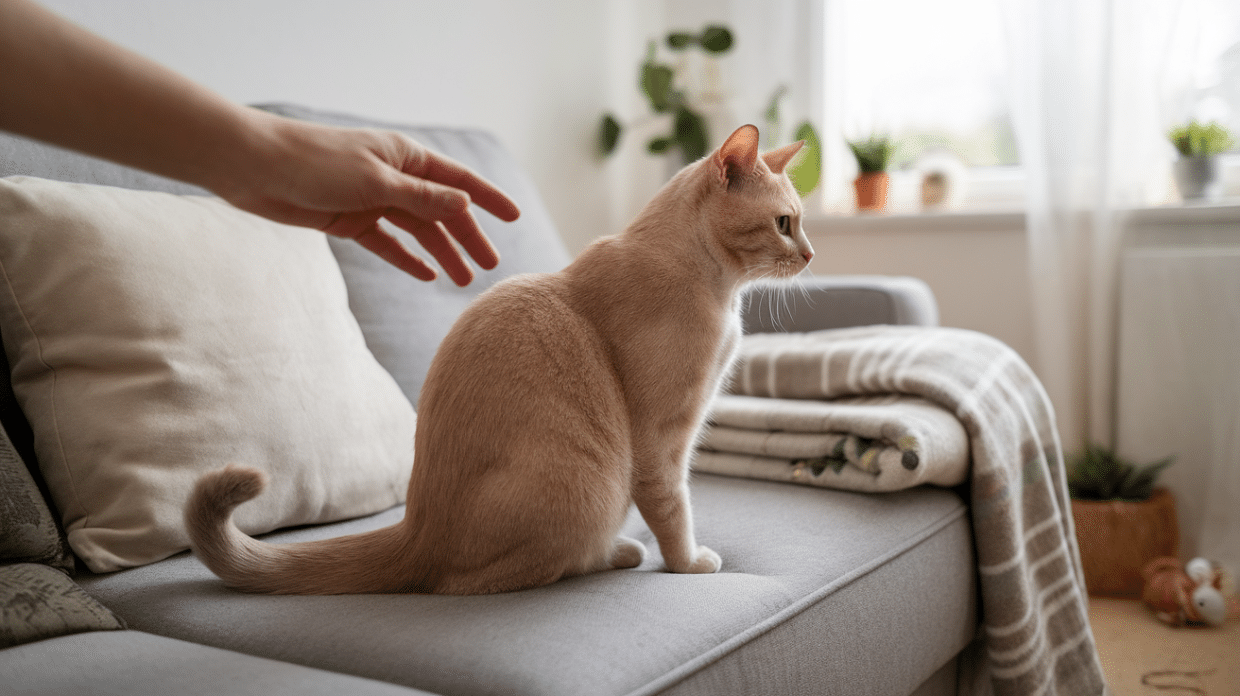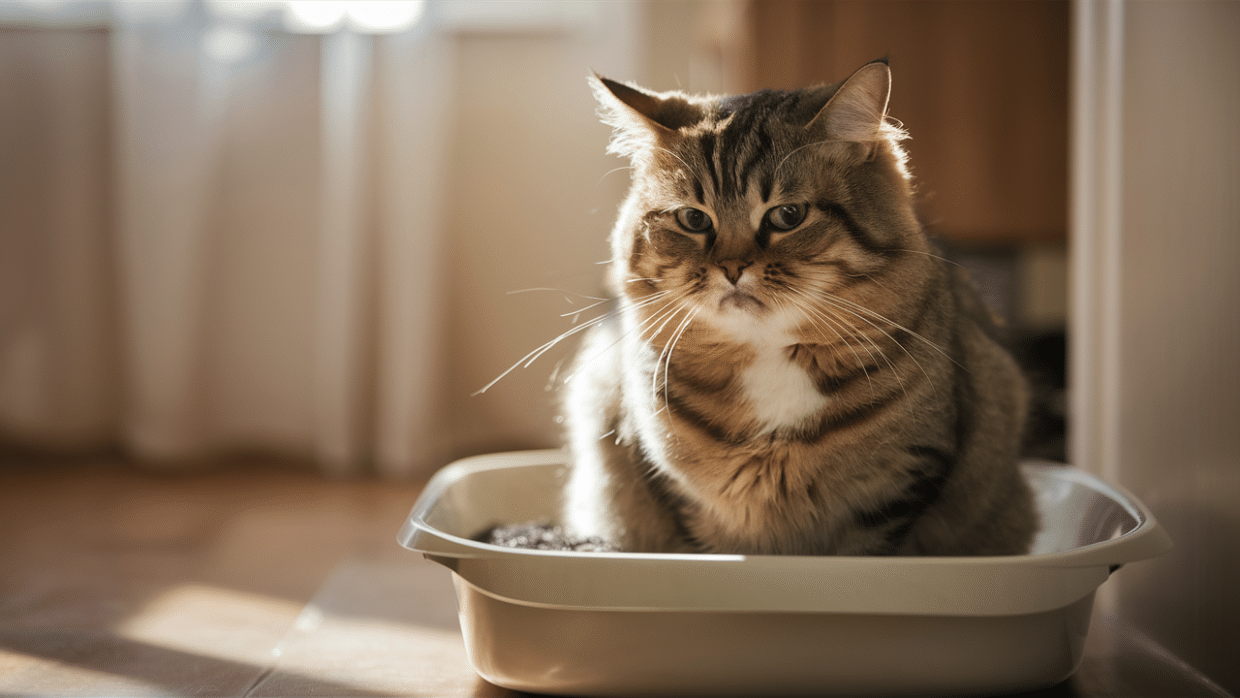Squid might seem like an odd treat for your cat, but many pet owners wonder if it’s a safe choice.
While seafood can offer great nutrients, it also comes with risks, especially when it comes to cats. If you’ve ever asked yourself if adding squid to your cat’s diet is a good idea, you’re not alone.
This guide covers everything you need to know: the health benefits, possible dangers, how to prepare squid properly, and how to spot warning signs if something goes wrong.
If you’re looking for new treats or are just curious, you’ll find out exactly how squid fits into your cat’s menu and why it might be a smart (or risky) choice.
Is Squid Safe for Cats?
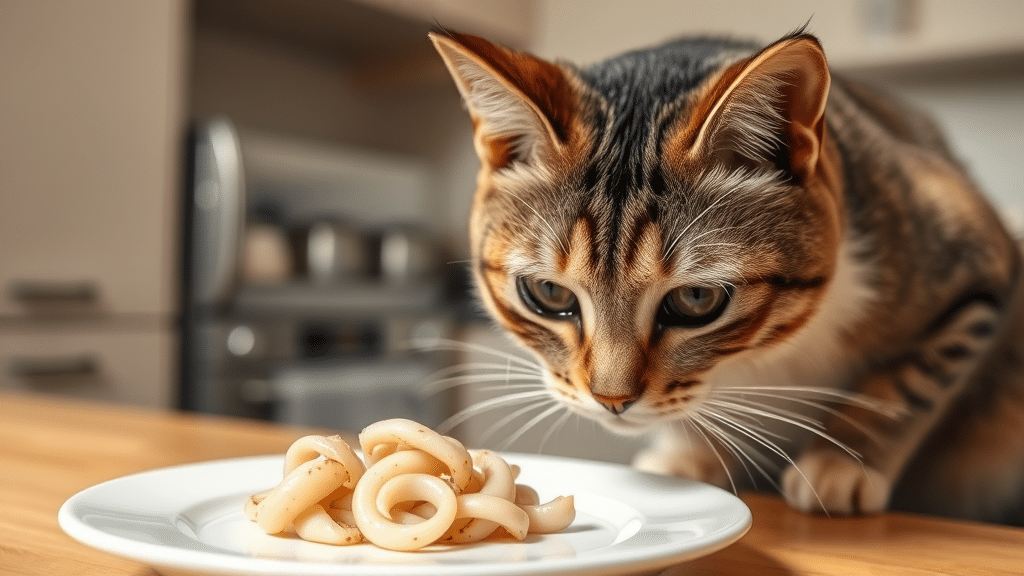
When prepared correctly, squid is generally safe for cats to eat. It contains protein and essential nutrients but should be given in small amounts.
Raw squid may have bacteria or parasites, so cook it thoroughly without spices or oils. Remove all bones and hard parts.
Many cat owners worry about seafood allergies. While possible, they’re not common in cats.
Start with tiny portions to check for reactions. High mercury levels can be a concern with some seafood, but squid typically has lower mercury content than larger fish.
Nutritional Benefits of Squid for Cats
Squid offers key nutrients that support your cat’s health. Learn how its protein, omega-3s, and taurine benefit muscles, skin, and heart.
Protein Content
Cats need protein for muscle growth, energy, and body functions. As true meat-eaters, their bodies require more protein than other pets.
Squid offers high-quality protein with all essential amino acids.
Compared to chicken or beef, squid has fewer calories but similar protein levels, making it a good option for cats who need to manage their weight.
Omega-3 Fatty Acids
Squid contains omega-3 fatty acids that help cats maintain healthy skin and shiny fur. These fats reduce skin irritation and excessive shedding.
They also support brain function, especially in older cats, helping them stay sharp and active. Regular small amounts can improve overall skin condition.
Taurine
Cats can’t make enough taurine alone, so they must get it from food. Squid is rich in this vital nutrient that keeps a cat’s heart working properly and prevents eye problems.
Without enough taurine, cats can develop serious heart issues and vision loss, making seafood like squid a helpful addition to their diet.
Risks of Feeding Squid to Cats
Feeding squid to cats isn’t always risk-free. Learn about potential digestive issues, allergies, and other health concerns to watch for.
Digestive Issues
Cats may get upset stomachs when eating new foods like squid. Their digestive systems need time to adjust to seafood.
Start by mixing tiny bits of cooked squid with regular food once a week. If your cat shows no signs of trouble (like vomiting or diarrhea), you can slowly offer slightly more, but always keep portions small.
Bacterial Contamination
Raw squid may contain harmful bacteria like Salmonella or parasites that can make your cat sick. Always cook squid completely to kill these germs.
Avoid seasoning with salt, garlic, or oils that can harm cats. Store leftover cooked squid in the refrigerator and throw it away after two days to prevent bacteria growth.
Allergies and Sensitivities
Watch for signs of allergies after feeding squid, including itchy skin, ear scratching, face rubbing, vomiting, or diarrhea. Some cats may sneeze or have watery eyes.
If you notice these symptoms, stop giving squid and call your vet. Keep a food diary to track what your cat eats and any bad reactions to help spot the exact cause.
Choking Hazards
Squid has a chewy, rubbery texture that can be hard for cats to bite and swallow properly. Cut squid into small pieces (smaller than a pea) before offering it.
Remove all tough parts and any hard bits like beaks. Never give whole squid rings, as they can get stuck in your cat’s throat. Always watch your cat while they are eating squid.
How to Prepare Squid for Your Cat
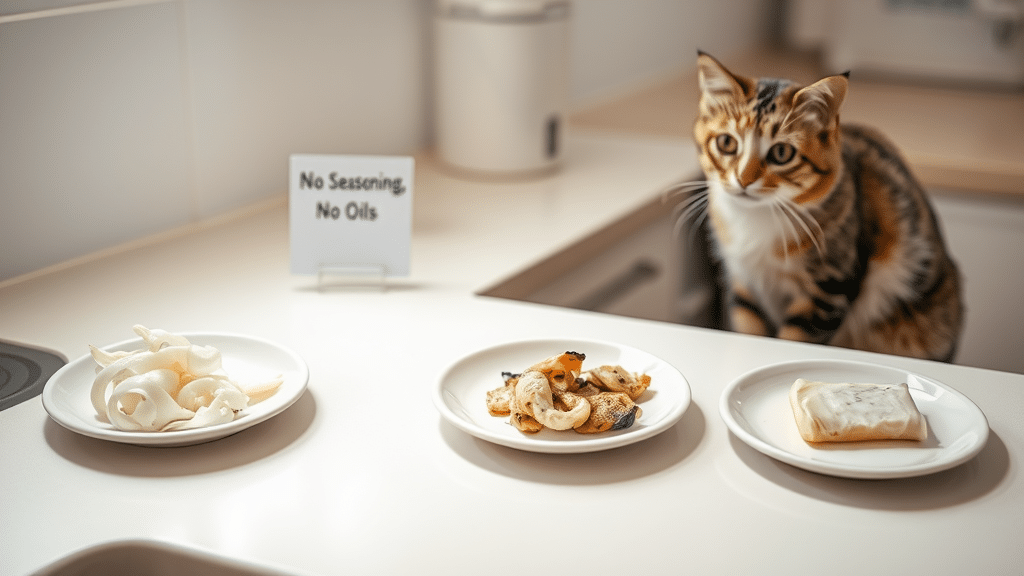
Best Ways to Cook Squid for Cats
- Boiling: Place squid in water and boil for 2-3 minutes until fully cooked. This simple method uses no oils or fats and keeps the squid soft.
- Grilling: Cook on medium heat until firm. Let it cool completely before serving. Remove any charred parts.
- Baking: Preheat the oven to 350°F and bake plain squid for 10-15 minutes. Ensure it’s thoroughly cooked but not tough.
Avoid Additives
Cats cannot safely eat human seasonings. Salt causes dehydration and kidney problems.
Garlic and onions are toxic to cats, and oils add unhealthy fats. Plain, unseasoned squid is the only safe option for feline treats.
How to Tell If Squid Is Harming Your Cat
Even when prepared properly, squid might not agree with every cat. Watch for these signs of a bad reaction, and stop feeding squid immediately.
- Vomiting or diarrhea soon after eating squid
- Constipation or bloating that lasts more than a day
- Refusing to eat their regular food after trying squid
- Excessive scratching or licking of fur
- Red, irritated skin or rash appearing after consumption
- Hair loss in patches following squid meals
- Unusual lethargy or low energy levels
- Increased aggression or irritability
- Hiding more than usual after eating squid
- Pawing at the face or ears excessively
- Sneezing or coughing after squid consumption
- Swollen face, especially around the mouth area
Comparison Chart with Other Sea Foods
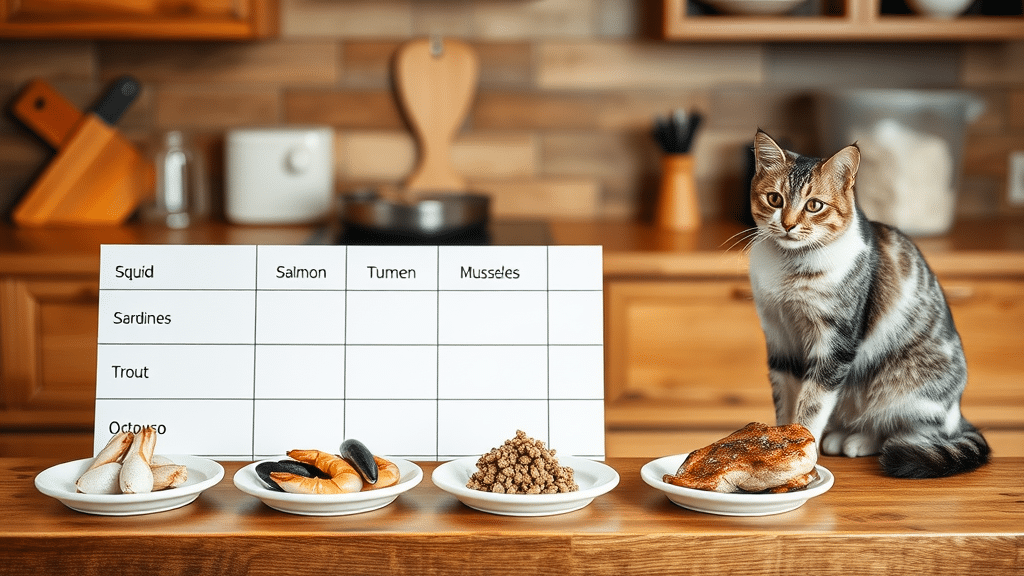
| Seafood | Benefits | Risks | Safe? | Best Serving Method |
|---|---|---|---|---|
| Squid | Protein, omega-3, taurine | Bacteria, chewy, digestion | Yes (moderation) | Cooked, plain, small pieces |
| Shrimp | Protein, omega-3 | Choking, bacteria | Yes (rarely) | Boiled, no shell, no seasoning |
| Salmon | Omega-3 coat health | Fat, mercury | Yes (small) | Cooked, no bones, no seasoning |
| Tuna | Protein, omega-3 | Mercury, imbalance | Yes (rarely) | Cooked, water-packed, no seasoning |
| Mussels | Protein, vitamins | Allergies, contamination | Yes (occasionally) | Boiled, plain |
| Sardines | Omega-3, calcium | Salt, preservatives | Yes (moderation) | Fresh/canned in water, bones in |
| Trout | Protein, omega-3 | Parasites, imbalance | Yes (small) | Cooked, no bones |
| Octopus | Protein, low fat | Tough, bacteria | No | Avoid |
Wrapping Up
Squid can be a healthy, protein-rich treat for cats if it’s cooked plain and fed in small amounts. Its omega-3s and taurine support your cat’s heart, skin, and energy levels.
Just be careful. Start slow, watch for reactions like vomiting or itching, and avoid raw or seasoned squid. When in doubt, ask your vet.
With the right prep and portion control, squid doesn’t have to be off the menu. It might even become a new favorite snack.
Want to learn more about what your cat can and can’t eat? Check out other helpful blogs on feline nutrition and care across our website.

